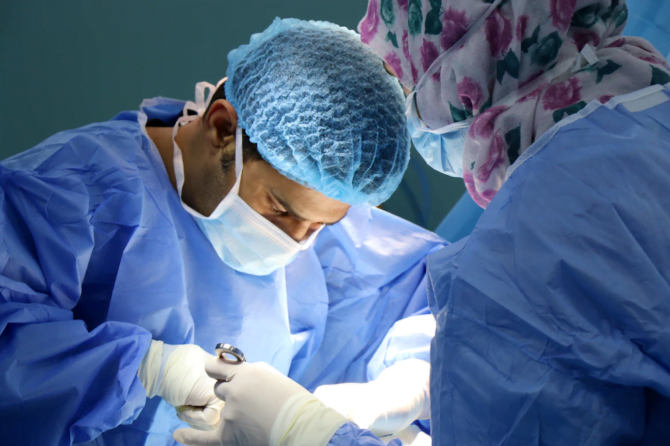
Circumcision Procedures: How does the Dorsal Slit Work?
Among the various adult circumcision methods available, one that often raises questions is the dorsal slit procedure. In this article, we’ll explain what the dorsal slit circumcision procedure entails, outline the post-circumcision care you can expect, and highlight the advantages of choosing this method
What is a Dorsal Slit Circumcision?
The dorsal slit is a circumcision technique that involves making a longitudinal cut along the top side of the penis. This cut exposes the glans (head) of the penis so that it can be removed. Physicians perform the dorsal slit procedure to relieve the tightness of the penis that prevents retraction. It is an easy and quick way to ease pressure from conditions like phimosis and paraphimosis. Phimosis is a condition where the foreskin is too tight to be retracted from the glans. Paraphimosis is a painful condition that occurs when you can’t return the retracted foreskin to its original position.
How the Dorsal Slit Procedure Works
- Anesthesia: The procedure usually involves local anesthesia, though general anesthesia is also an option. The doctor will numb the area with a topical cream, injectable medication, or penile block.
- Incision: A longitudinal cut is made along the top side of the penis, starting at the base and extending toward the tip. The incision length depends on how much skin needs to be removed.
- Crushing and Dividing: The inner and outer preputial layers are crushed and divided up to the corona to completely free the prepuce under direct vision. Crushing reduces the risk of hemorrhage that can incur to local blood vessels when making the incision.
- Closing the Incision: The incision is closed with dissolvable sutures, and a dressing is applied to aid healing. Instructions for wound care are provided for recovery.
Pre-Surgery Preparation
Before the procedure, patients need to be fully prepared to prevent any injuries or complications during the surgery. Here are some things to remember before undergoing circumcision:
- Informed Consent: Make sure that your clinic provides informed consent before the procedure.
- Blood-Thinning Medications: Consult your doctor about safely stopping blood thinners, as they can increase the risk of bleeding during the procedure.
- Avoid Alcohol and Smoking: Refrain from drinking alcohol or smoking a few days before the procedure, as these can interfere with anesthesia and slow recovery.
- Wear Comfortable Clothing: Opt for loose-fitting underwear and trousers to minimize friction and discomfort post-surgery.
Post-Surgery Care for Circumcision
After the dorsal slit circumcision procedure it’s normal to experience some swelling and bruising in your groin area. The dressing needs to be left in place for 48 hours. After that, you can remove it and clean the area with soap and water. If your dressings are left on too long, it may cause an infection of the wound.
- Swelling and Bruising: Swelling and bruising are normal after the dorsal slit circumcision. Keep the dressing on for 48 hours, then clean the area with soap and water.
- Discharge and Pain Management: Some discharge from the incision site is expected. If foul-smelling or excessive, contact your clinic immediately. Your doctor may prescribe pain medication.
- Avoid Sexual Activities: Avoid sexual activities or masturbation during healing, as erections can disrupt the sutures.
Advantages of Dorsal Slit Circumcision Procedure
The advantage of this approach is that it provides more access to the inner foreskin than other methods, which makes it ideal for treating phimosis and paraphimosis. It’s also a relatively simple procedure that physicians can perform quickly and with minimal discomfort.
- Direct Vision: Allows doctors to identify and treat injuries intraoperatively.
- Less Bleeding: Crushing preputial layers reduces hemorrhage risk.
- Reduced Infection Risk: Lower risk of infection and complications compared to other methods.
- Effective for Phimosis and Paraphimosis: Offers effective treatment for these conditions.
Safe Circumcision with Board-Certified Doctors
Circumcision is often considered a minor surgical procedure. And knowing how to prepare for the procedure, what happens during the procedure, and the proper home care after the procedure helps ensure that the whole circumcision process is correct and comfortable.
For any circumcision method, including the dorsal slit method, the ultimate goal is that it is safe and without complications. So as much as it’s a minor procedure, it’s still important that it is performed by professional and qualified doctors who are trained to do it.
If you’re considering circumcision surgery, be sure to discuss all of your options with your surgeon. The type of procedure that’s right for you will depend on several factors, including your personal preferences and medical history.
Schedule a free phone consultation with us to learn more about the different circumcision methods available. Contact us today!
Leave a reply
Leave a reply